| Columns Retired Columns & Blogs |
Viola Audio Laboratories Cadenza preamplifier Measurements
Sidebar 3: Measurements
The Viola preamplifier's maximum voltage gain at 1kHz was 16dB, unbalanced input to unbalanced output, and 6dB higher as expected, balanced input to balanced output. The Gain controls offered accurate attenuation steps of 1dB. Both unbalanced and balanced operation preserved absolute polarity (the balanced XLR jacks appear to be wired with pin 2 positive). The unbalanced input impedance measured around 1 megohm at 20Hz and 1kHz, dropping to around 300k ohms at 20kHz, with the balanced results twice as large. (Those last figures can be only approximate, given the large margin of error in measuring such high impedances.)
The output impedance in the midrange and treble was a low 100 ohms unbalanced and 200 ohms balanced. It increased at low frequencies, however, reaching 820 ohms unbalanced and 2k ohms balanced. The Cadenza should be used with a power amplifier having an input impedance of at least 20k ohms if the bass is not to roll off prematurely. The bottom two traces in fig.1, for example, show the balanced response into a low 600 ohm load, –3dB at 65Hz. Into 100k ohms, however, the output is flat down to below 20Hz (fig.1, top traces). At the other end of the spectrum, the Cadenza's output was not down 3dB until a very high 175kHz. Gratifyingly, the preamplifier's extended bandwidth remained the same at all settings of the Volume and Gain controls and was the same from both balanced and unbalanced outputs.
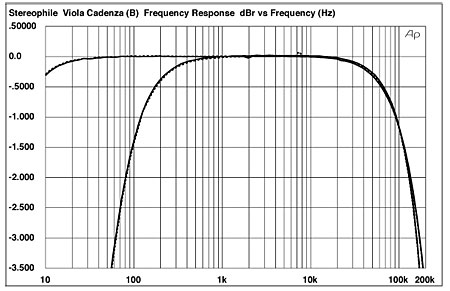
Fig.1 Viola Cadenza, Volume control at max, Gain at "15," balanced frequency response at 1V into (from top to bottom at 200Hz): 100k ohms, 600 ohms (0.5dB/vertical div.).
Channel separation was excellent in the midrange and bass, but decreased at higher frequencies due to capacitive coupling somewhere in the circuit (fig.2), reaching a still good 85dB at 20kHz. The Cadenza had a low noise floor, revealed by the linearly decreasing percentage of THD+noise up to several volts in figs.3 and 4, which plot THD+N against balanced and unbalanced output voltage, respectively. The maximum output voltages, at 1% THD+N into 100k ohms, were 15.5V balanced and 8.75V unbalanced. The Cadenza's actual distortion can be seen to lie below the noise floor until 5V or so; fig.5 plots the THD+N percentage against frequency at 5V balanced into 100k and 600 ohms. The midband distortion was very low into both impedances, and though there is a rise in THD evident above the audioband, particularly into the low impedance, this is still to a very low level.
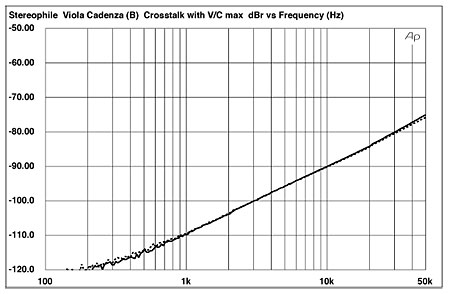
Fig.2 Viola Cadenza, balanced channel separation (R–L dashed, 10dB/vertical div.).
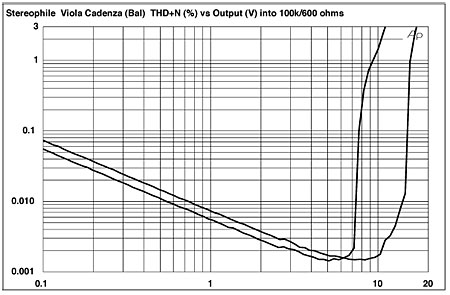
Fig.3 Viola Cadenza, balanced distortion (%) vs 1kHz output voltage into (from bottom to top at 10V): 100k and 600 ohms.
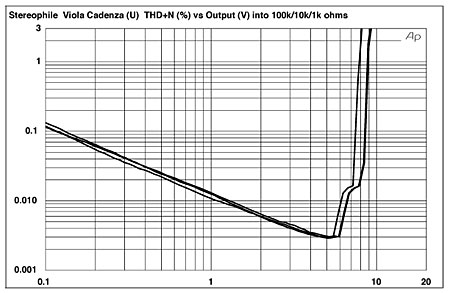
Fig.4 Viola Cadenza, unbalanced distortion (%) vs 1kHz output voltage into (from bottom to top at 1V): 100k, 10k, and 1k ohms.

Fig.5 Viola Cadenza, balanced THD+N (%) vs frequency at (from bottom to top at 10kHz): 5V into 100k and 600 ohms.
At a 1V output level, other than the subjectively innocuous second harmonic at –104.5dB (0.0007%), all the harmonics are at the residual level of the signal generator (fig.6). The Cadenza performed similarly well when tested for high-frequency modulation (fig.7), where the 1kHz difference component lay at –96.5dB (0.0015%). DC offsets in the preamp's output were negligible.
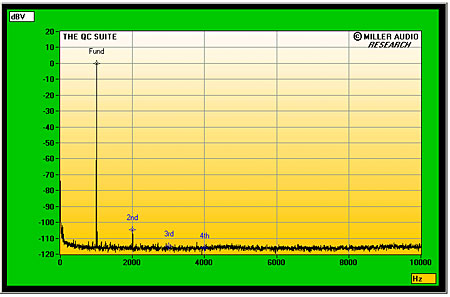
Fig.6 Viola Cadenza, unbalanced spectrum of 1kHz sinewave, DC–1kHz, at 1V into 8k ohms (linear frequency scale).
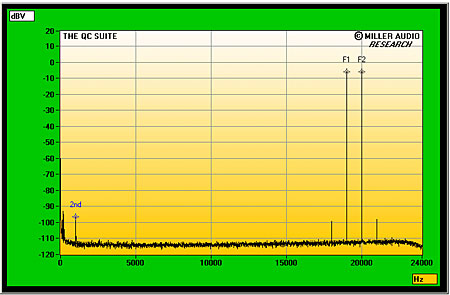
Fig.7 Viola Cadenza, unbalanced HF intermodulation spectrum, DC–24kHz, 19+20kHz at 1V into 8k ohms (linear frequency scale).
It was a pleasure to measure such a well-engineered product as Viola's Cadenza preamplifier. Provided it is used with a power amplifier having a suitably high input impedance, it is hard to see how it could add anything adverse to a system's sound quality.—John Atkinson
- Log in or register to post comments




































